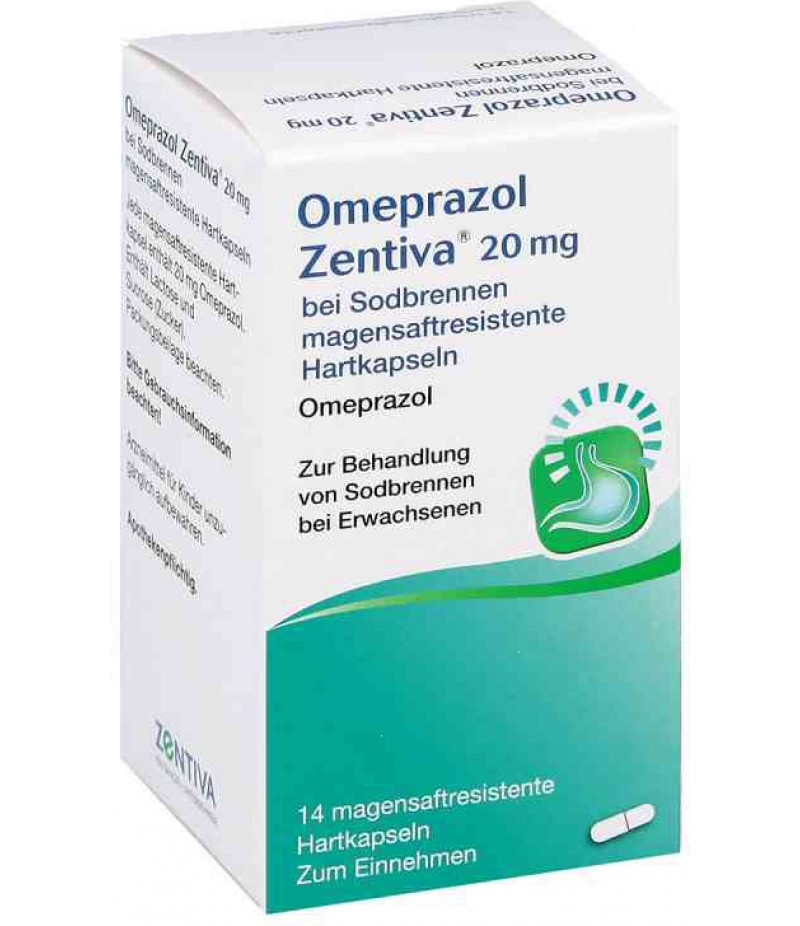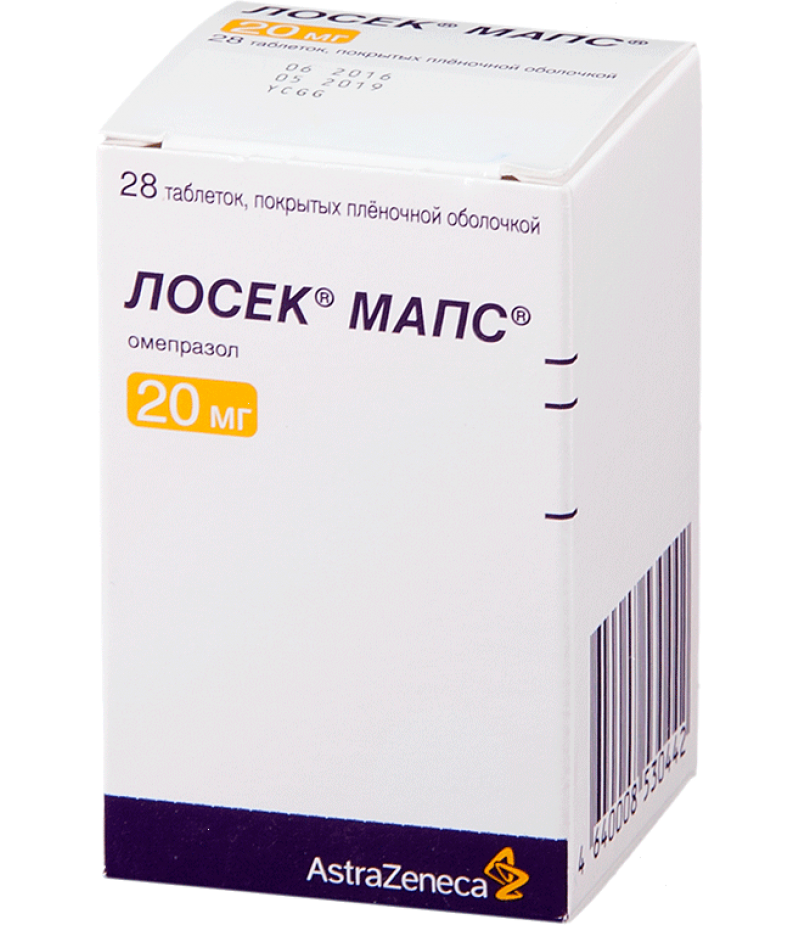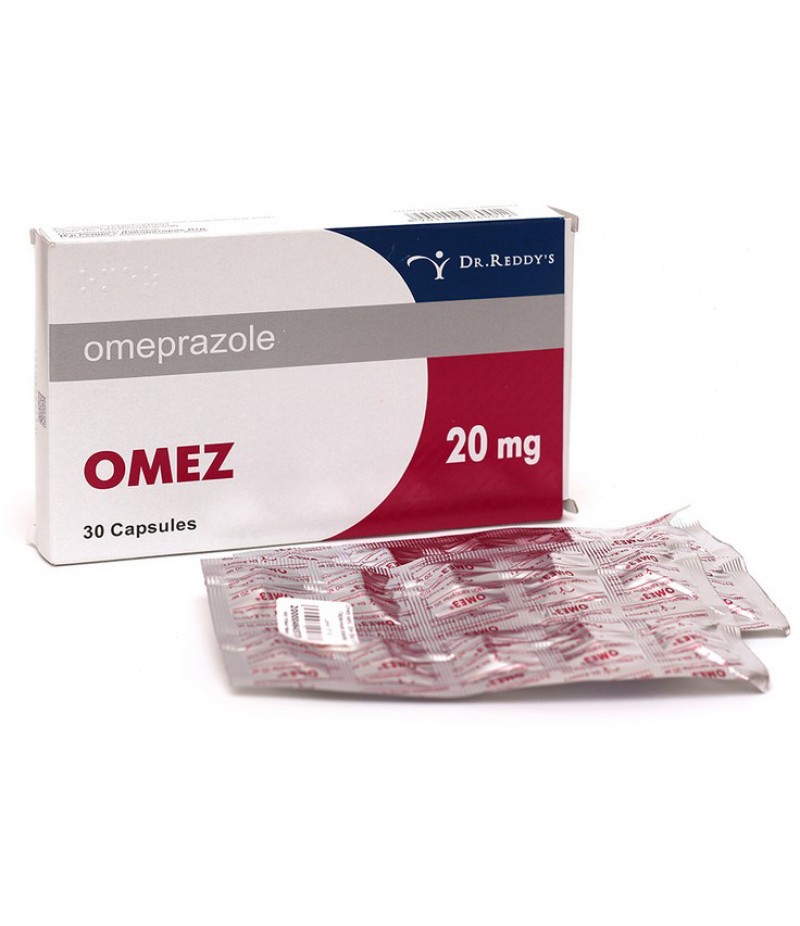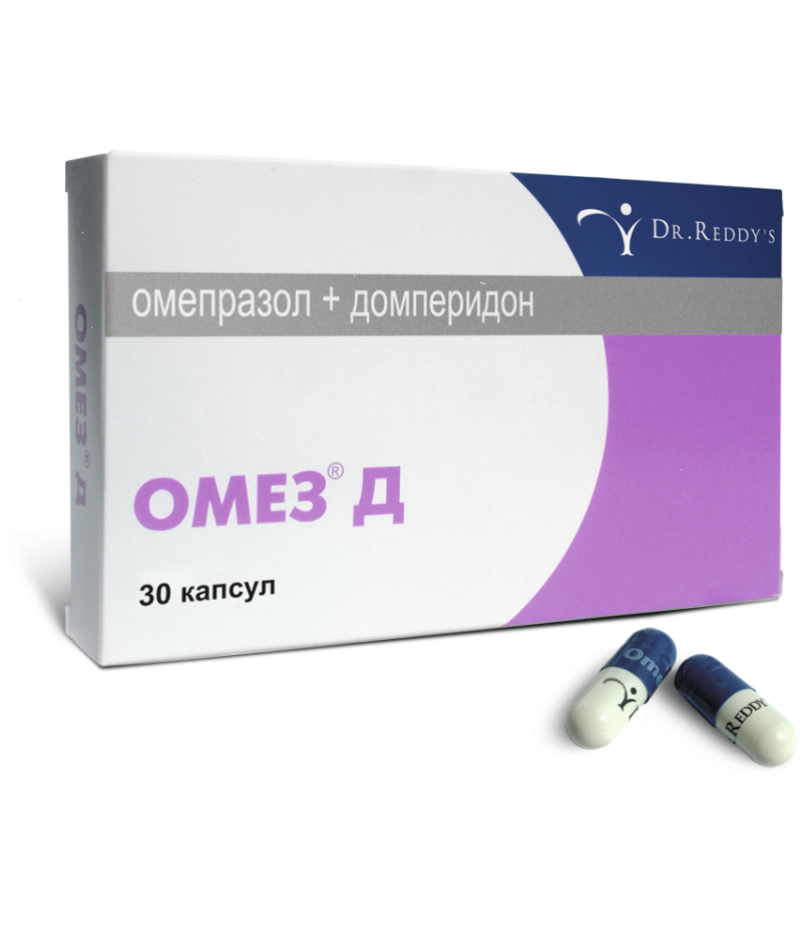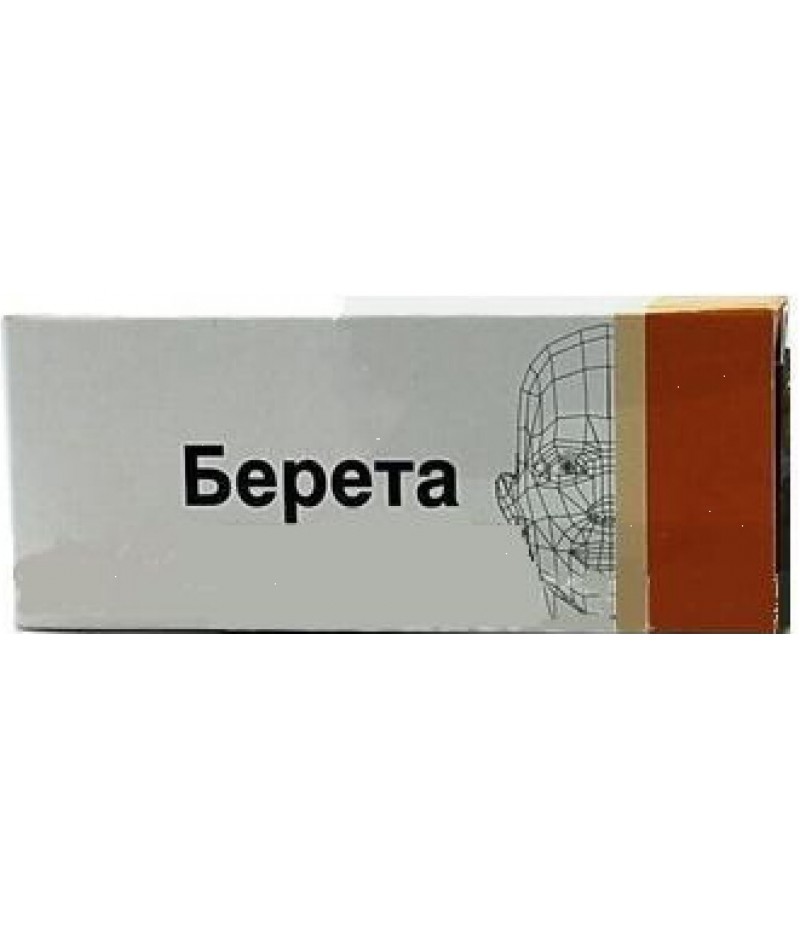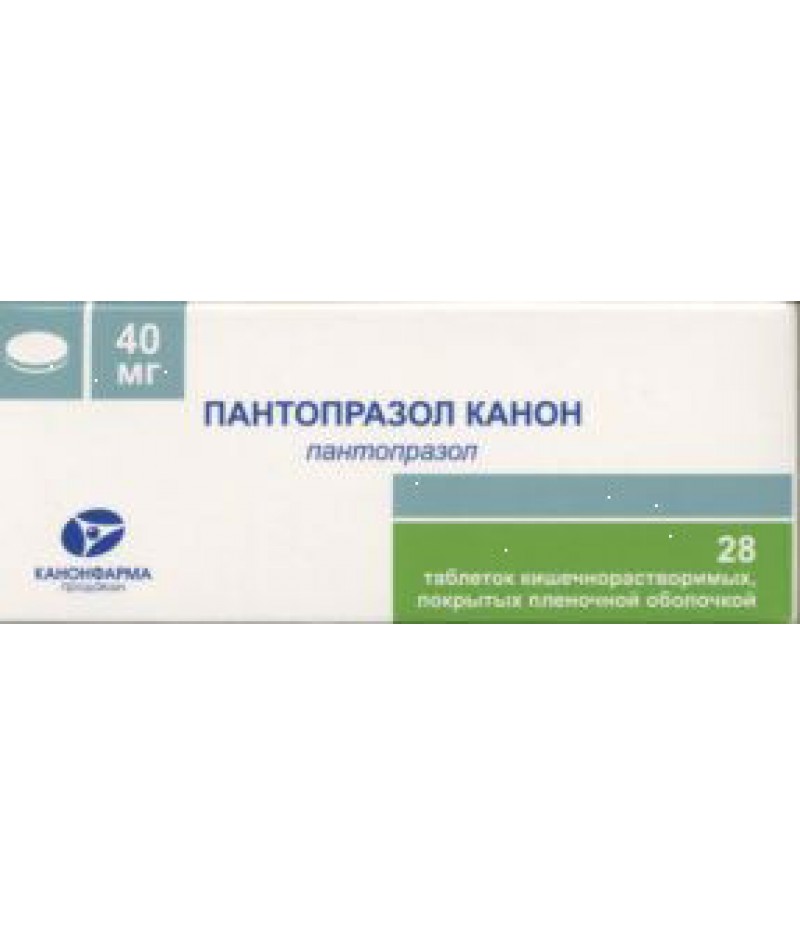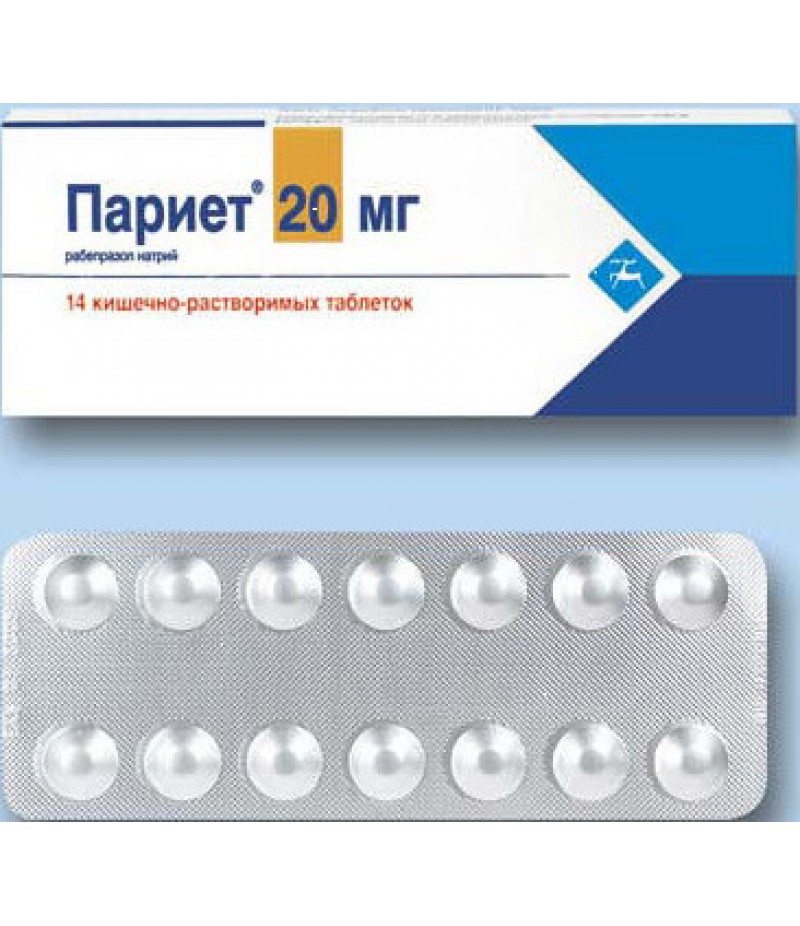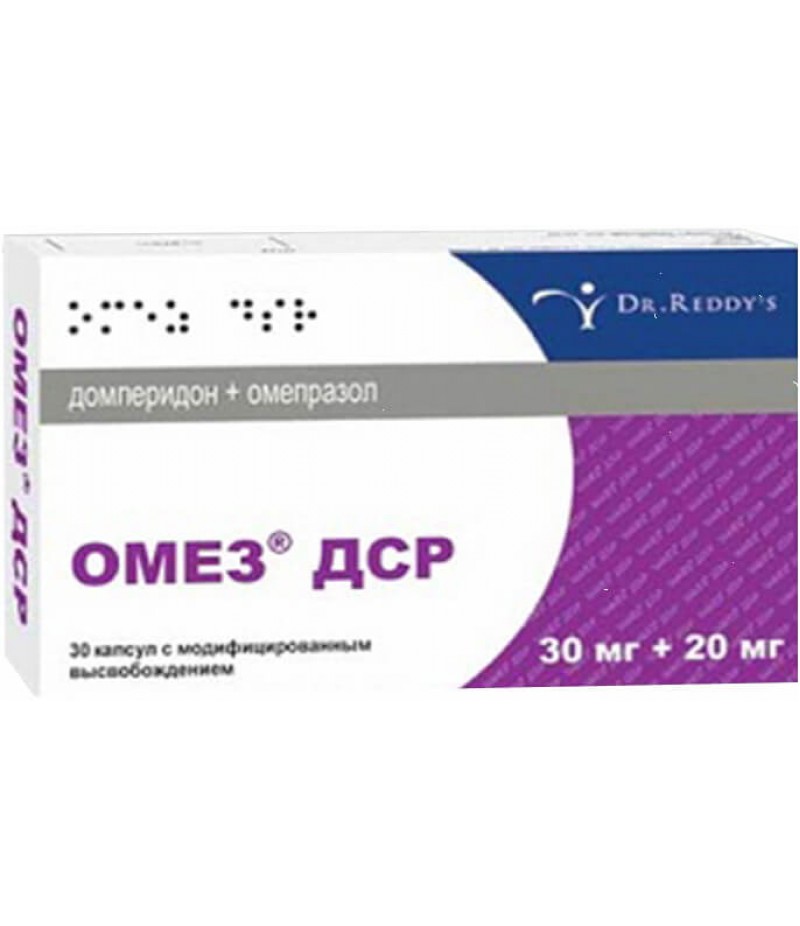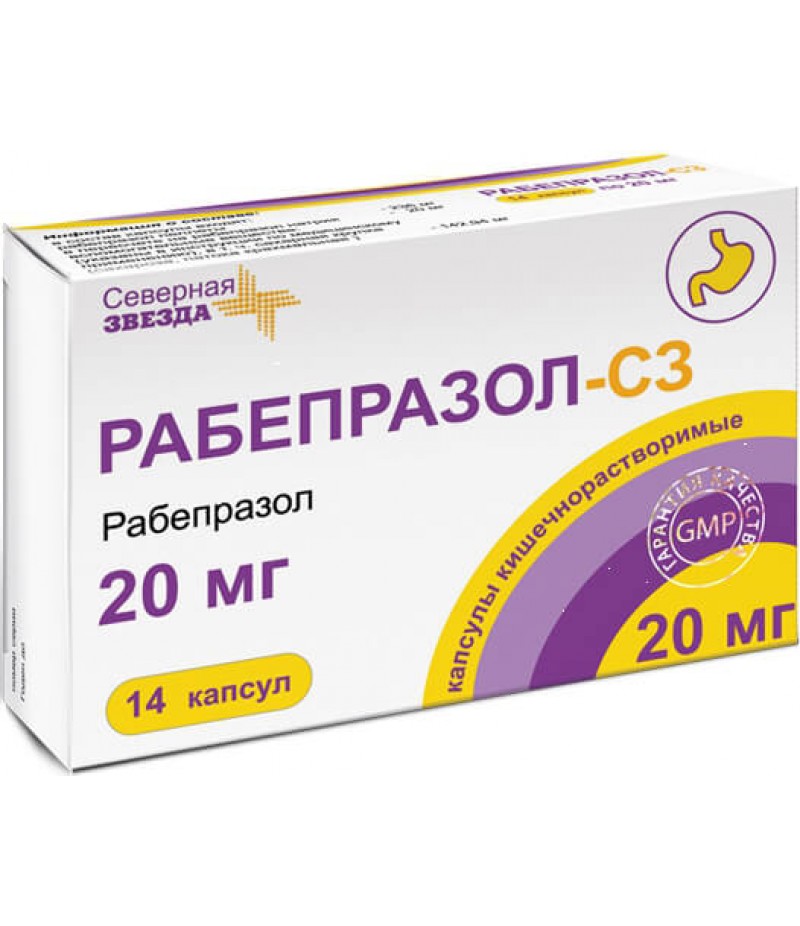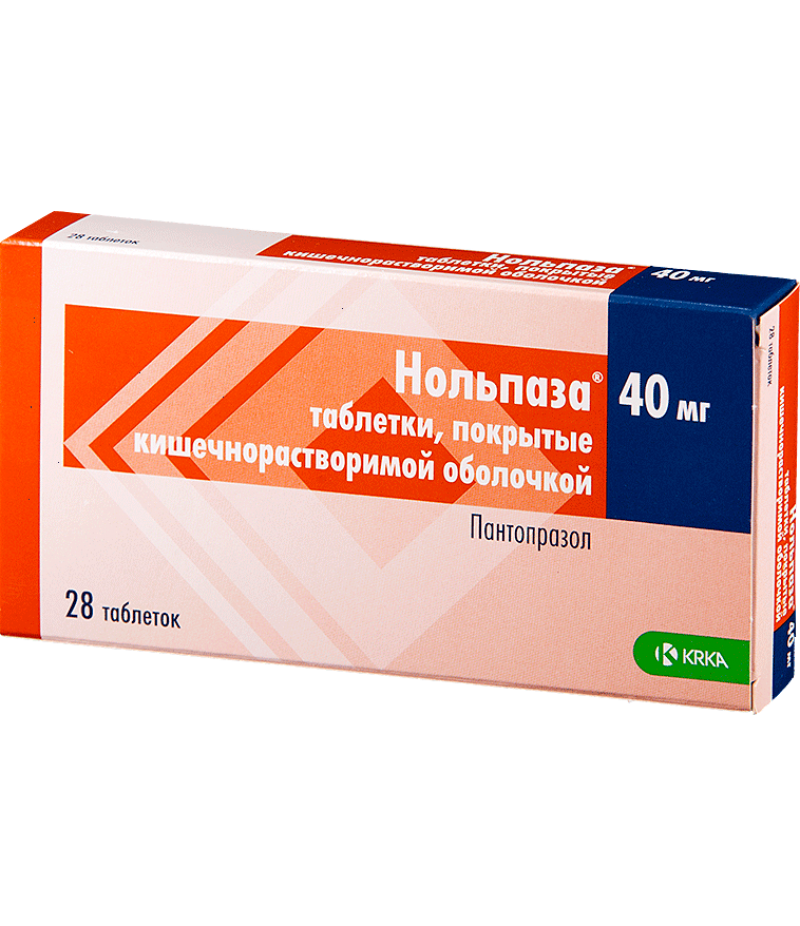Omeprazole 20mg #28
- $8.80
- 3 or more $8.30
- 5 or more $7.90
- Availability:In Stock
You can buy Omeprazole on this pageInstruction for OmeprazoleCompositionOne capsule contains 20 mg of pellets in terms of omeprazole. Pellets represent micro granules of spherical shape. Auxiliary components of pellets: additives ..
Tags: caps
You can buy Omeprazole on this page
Instruction for Omeprazole
Composition
One capsule contains 20 mg of pellets in terms of omeprazole. Pellets represent micro granules of spherical shape. Auxiliary components of pellets: additives Е421, Е217, Е171, Е219, Е170; dodecyl sulfate and sodium hydrogenphosphate, dodecahydrate, cetyl alcohol, sucrose, hypromelose.
The lyophilizate contains 40 mg of omeprazole, as well as sodium hydroxide and disodium edetate.
Form of issue
Capsules k / r 0.02 g (package No. 10, No. 30, No. 60, No. 100 and No. 120).
Lyophilizate for the preparation of r-ra for intravenous administration and infusion therapy (bottles of 40 mg).
pharmachologic effect
Antiulcer, inhibiting the proton pump.
Pharmacological group: proton inhibitor.
Pharmacodynamics and pharmacokinetics
Omeprazole inhibits the proton pump (H + / K + -ATPase) in the parietal cells of the stomach, thereby blocking the final stage of the formation of hydrochloric (hydrochloric) acid.
The drug begins to act within the first 60 minutes after administration. The effect persists for the next 24 hours, with the peak reaching 2 hours after ingestion.
With the ulcer of the 12-typer intestine, taking 0.02 g of the preparation allows maintaining the intragastric acidity index at the level of 3 within 17 hours. It takes 3-5 days to completely restore the secretory activity.
The substance is rapidly absorbed from the digestive canal. ТСмах varies within the limits of 30 to 60 minutes, bioavailability - from 30 to 40%. The drug is approximately 90% associated with plasma proteins and is almost completely metabolized in the liver.
T1 / 2 - from 30 minutes to 1 hour. Metabolism products are excreted mainly by the kidneys. With CRF, the excretion decreases in proportion to the decrease in Clcr. In older people, excretion decreases with simultaneous increase in bioavailability. With liver failure, T1 / 2 is 3 hours with 100% bioavailability.
Indications for use of omeprazole
What causes omeprazole in capsules?
Indications for the use of omeprazole Acrya are no different from the indications listed in the omeprazole annotation produced by another pharmaceutical company (Sandoz, Gedeon Richter Plc., STADA CIS, etc.). The drug is effective when:
benign gastric / duodenal ulcer (including if the disease is associated with the intake of NSAIDs);
eradication therapy H. pylori (in combination with antibacterial drugs);
GERD;
prevention of aspiration of acidic gastric contents;
ulcerogenic adenoma of PJ;
weakening of the symptoms of acid-dependent dyspeptic disorders (the drug helps with heartburn, eliminates the severity of the abdomen, belching, flatulence, bloating, unpleasant aftertaste and nausea).
What helps omeprazole (Acre, Stade, Sandoz, Richter, etc.) for these diseases? The drug, acting at the molecular level, suppresses the synthesis of hydrochloric acid by the lining of the gastric mucosa and prevents the increase in secretion after ingestion.
Thus, in the treatment with omeprazole, there is a rapid regression of gastric and / or duodenal ulcers caused by a violation of acidity, symptoms of dyspepsia and pain disappear, and overall well-being improves.
By provoking a persistent decrease in acidity, the drug creates optimal conditions for successful eradication of H. pylory, which is responsible for 90% of all gastritis and peptic ulcer.
Omeprazole for gastritis
With gastritis, omeprazole is prescribed only in those cases when the patient has increased acidity of the gastric secretion.
With hypo-and normoacid gastritis, the use of the drug is contraindicated, since it can provoke thinning of the mucous membrane, a decrease in the number of glands and a secretion deficiency of the stomach with zero acidity of the digestive juice contained in it.
The optimal dose for gastritis is 20 mg / day. Treatment, as a rule, lasts from 2 to 3 weeks. If the disease is associated with H. pylori infection, the patient is prescribed antibacterial drugs concomitantly with omeprazole according to one of the schemes generally accepted for such cases.
The use of omeprazole for heartburn
Proton pump inhibitors (PPI) in small doses (for example, omeprazole Sandoz capsules containing 10 mg of active substance) belong to the group of OTC drugs and can be used to treat recurrent heartburn.
A doctor's consultation is necessary if:
the patient has other symptoms (weight loss, epigastric pain or behind the sternum, dysphagia);
relapses of heartburn become more frequent.
The oldest and most well-known method of arresting heartburn is the use of Al / MgCa containing antacid agents, which are based on the ability to neutralize hydrochloric acid in the lumen of the stomach.
Their only advantage is speed. The shortcomings are short-term effect (not more than 1.5 hours), the ability to provoke stool disorders (depending on the drug composition, the patient may have constipation or diarrhea) associated with absorption of the side effects they contain in their composition.
In addition, antacid preparations aggressively interact with other drugs, while violating the absorption of concomitant medications. With heartburn, which is a manifestation of GERD, the effectiveness of antacids is very low.
Another group of drugs that have traditionally been used to treat heartburn are alginates. They do not have a neutralizing effect, but create a mechanical barrier that does not allow the contents of the stomach to enter the esophagus.
Despite all the advantages of alginates and antacids, the most effective for heartburn are the drugs that suppress the formation of hydrochloric acid. Prior to the introduction of PPI, the most popular agents were H2-histamine-receptor blockers.
Their effect comes later than the effect of alginates or antacids (this is due to the need for these drugs to enter the systemic circulation), but it persists for 8-12 hours.
The disadvantage of H2-histamine-receptor blockers is that for the relief of persistent, repeated heartburn, their use in doses for over-the-counter use does not always give the desired effect.
Also, when taking H2-gistaminoblockers in small doses, a phenomenon can be formed, which is known as "slippage of the effect," which may be due to the development of tolerance to drug data.
In addition, they - especially preparations of the first generations - have a pronounced inhibitory effect on the system of microsomal oxidation of the liver and can interact with simultaneously taken drugs (changing their pharmacokinetic parameters).
H2-histamine blockers potentiate the effect of alcohol, which makes them ineffective for stopping heartburn caused by drinking.
The most effective method of treatment for heartburn (including heartburn that occurs at night) is considered to be the use of OTCs containing 10 mg of omeprazole.
The full therapeutic effect of the drug for heartburn is achieved already in the first 4 days, although in some patients the disappearance of symptoms and complete relief is noted already in the first day of omeprazole.
The use of small doses of the drug "on demand" for the treatment of non-erosive reflux-esophagitis in more than half of patients contributes to the elimination of dyspeptic symptoms for at least six months.
Omeprazole is well tolerated by patients and has a low risk of developing serious side effects in patients receiving it. When taking low doses of the drug, adverse events are usually single and are characterized by a moderate degree of severity.
The side effects that are described in the Vidal and Wikipedia Handbook with long-term use of high-dose PPIs do not occur when taking small doses of omeprazole.
What is omeprazole for pancreatitis?
In chronic pancreatitis, the effectiveness of omeprazole is due to its ability to reduce intra-pancreatic pressure by suppressing the secretion and thereby reduce the burden on the inflamed and weakened pancreas (PJ).
Thus, the purpose of prescribing the drug in pancreatitis is to ensure maximum dormancy of the PJ.
In addition, chronic pancreatitis is in most cases complicated by GERD, the main causes of which are a violation of esophageal and stomach motility, weakness of esophageal sphincters, and also hiatal hernia in combination with increased secretion of acid in the stomach.
Getting into the esophagus, the acid content of the stomach provokes heartburn, pain behind the sternum, a sour taste, reflex cough and an increase in the incidence of tooth decay.
Omeprazole helps with heartburn and eliminates other dyspeptic symptoms, greatly facilitating the course of GERD, reducing the intensity of its manifestations and relieving the PJ. The drug can be used for a long time (from one month to six months or more).
What is the administration of omeprazole for / in?
B \ in the use of the drug is shown as an alternative to taking capsules in the following cases:
treatment and prevention of recurrence of ulcers of the 12-colon;
treatment and prevention of recurrences of stomach ulcers;
eradication of H. pylori in peptic ulcer (in combination with appropriate antibacterial agents);
treatment and prevention of peptic ulcer associated with the use of NSAIDs (including in patients at risk);
reflux-esophagitis therapy (including long-term treatment of patients with inactive form of the disease);
treatment of symptomatic GERD;
treatment of ulcerogenic adenoma of PJ.
Contraindications
Contraindications to the use of the drug are the age of up to 5 years (with the body weight of the child up to 20 kg), lactation and hypersensitivity to omeprazole or contained in the capsules / lyophilizate auxiliary substances.
Side effects
Side effects of the drug appear as:
disturbances in the function of the digestive system (abdominal pain, stool disorders, nausea, vomiting, increased activity of liver enzymes, flatulence, taste disturbance, stomatitis, dry mucous in the mouth, liver dysfunction, patients with previous severe liver disease may develop hepatitis).
Violations of the function of the hematopoietic organs, the symptoms of which are leuko-, pancito-, thrombocytopenia, agranulocytosis.
Violations of the function of the musculoskeletal system (myalgia, arthralgia, myasthenia gravis).
Disturbances from the skin (photosensitization, rashes on the skin, skin itching, alopecia, multiforme exudative erythema).
Violations of the function of the NS: in patients with concomitant severe somatic pathologies, dizziness, headache, depression or agitation may occur; In patients with previous severe liver disease - encephalopathy.
Hypersensitivity reactions: bronchospasm, fever, angioedema, hives, anaphylactic shock, interstitial nephritis.
Other disorders: gynecomastia, general malaise, peripheral edema, visual impairment, hyperhidrosis, the formation of benign glandular (glandular) cysts in the stomach (pathology develops with long-term use of the drug as a result of inhibition of HCl secretion and is reversible).
Powder and tablets of omeprazole: instructions for use
Instructions for use Omeprazole-Acry (capsules k / p)
The daily dose of the medicine depends on the indications:
peptic ulcer, esophageal reflux - 20 mg;
reflux-esophagitis - 20, with severe disease - 40 mg;
prevention of relapse of reflux esophagitis and peptic ulcer - 10 mg (in small doses, the drug can be taken for a long time);
prevention of acid-aspirating pneumonitis - 40 mg once an hour before surgery (if the operation lasts more than 2 hours, the patient is shown the repeated administration of the required dose);
acid-dependent dyspepsia - 10-20 mg;
ulcerogenic adenoma of PJV - 20-120 mg (if the dose exceeds 80 mg / day, it should be divided into 2-3 admission).
Resistant to other antiulcer drugs, patients receive omeprazole at a dose of 40 mg / day.
To eradicate H. pylori use one of the approved international treatment regimens, according to each of which omeprazole should be taken 2 r. / Day. 20 mg in addition to the main therapy.
With ulcers of the 12-типерстной intestine therapy can be "double" or "triple".
The "triple" therapy is carried out as follows:
the first week - Amoxicillin + Clarithromycin (twice a day for 1 and 0.5 g, respectively);
the second week - Clarithromycin + Metronidazole (twice a day for 0.25 and 0.4 g, respectively, instead of Metronidazole, 0.5 mg of Tinidazole can be taken);
the third week - Amoxicillin + Metronidazole (three times a day for 0.5 and 0.4 g, respectively).
"Double" therapy: 0.75 g Amoxicillin 2 r. / Day. for 14 days + 0.5 g of Clarithromycin 3 r. / day. within 14 days.
"Double" therapy for gastric ulcer: 0.75-1 g Amoxicillin 2 r. / Day. within 14 days.
For eradication of H. pylori, Clarithromycin, Trichopolum, Omeprazole and De-Nol can also be used. Clarithromycin and Trichopolum are prescribed in a dose of 15 mg / kg / day., Omeprazole - in a dose of 0.02 g 1 r./d., De-Nol should be taken 4 r. / Day. 1 tablet. The duration of such therapy is 10 days.
Children omeprazole capsules appointed from 5 years (with a weight of not less than 20 kg).
Instructions for the use of omeprazole-Richter and other generic drugs is similar to the instructions for omeprazole-acry.
How to take omeprazole - before meals or after?
Capsules are taken orally with a small amount of liquid (can be taken with food), without crushing, not chewing, without damaging the integrity of the shell. The preferred time of reception is the morning hours (before meals).
How long can I take omeprazole?
The duration of the course with ulcer of the 12-типерстной gut depending on the features of the clinical picture and the response of the patient's body to treatment is from 2 to 5 weeks, with reflux-esophagitis and stomach ulcer - from 4 to 8 weeks.
With acid-dependent dyspepsia, the course lasts 2-4 weeks. If, at the end of the test, the symptoms do not disappear or quickly reappear, the diagnosis of the patient should be reviewed. If necessary, the drug continues to take in a smaller single dose.
In the presence of indications, omeprazole can be used for a long time (until erosion and ulcerative defects of the gastric mucosa / 12-colon intestine start to heal). With ulcerogenic adenoma of the prostate cancer treatment course can last up to 5 years.
Omeprazole: how to take the drug for self-medication?
Over-the-counter medications of omeprazole (with a dosage of active substance 10 mg) should not be taken longer than 14 days without the approval of the attending physician.
Features of application of omeprazole IV
Intravenous administration of the drug is an alternative to oral therapy in cases where taking capsules is not possible.
The standard dose is 40 mg 1 rub. / Day. intravenously. Treatment of patients with ulcerogenic adenoma of the prostate begins with a dose of 60 mg / day. If there is a need to use higher doses, the treatment regimen is selected individually. If the daily dose exceeds 60 mg, it must be divided into 2 injections.
Intravenously, the drug is administered as an infusion lasting from 20 minutes to half an hour.
Before administration, the contents of the vial are dissolved in a volume of 5 ml, and then the volume is immediately adjusted to 100 ml. As a solvent, a glucose solution of 5% or a NaCl solution of 0.9% is used. The stability of the preparation depends on the pH of the solvent, so do not use for dilution:
other solutions;
more solvent.
Infusion solution should be used immediately after preparation. Any residues or waste must be disposed of.
Overdose
Symptoms of an overdose of omeprazole: confusion, drowsiness, decreased clarity in the perception of visual images, headache, dryness of the oral mucosa, nausea, arrhythmia, tachycardia.
Therapy: symptomatic. Hemodialysis is not considered effective.
Interaction
Prolonged use of the drug in a dose of 0.02 grams 1 p. / Day. in combination with Theophylline, Naproxen, caffeine, Pyroxicam, Metoprolol, Diclofenac, ethanol, Propranolol, Cyclosporin, Quinidine, Lidocaine and Estradiol does not change their plasma concentration.
With simultaneous use with antacids, no interaction was noted.
Omeprazole affects the bioavailability of any drug, the absorption of which depends on the value of the acidity index (iron salts, for example).
Storage conditions
Storage temperature should not exceed 25 ° C. Keep away from children.
Shelf life
For lyophilizate - 2 years. For capsules - 3 years.
special instructions
In connection with the likelihood of side effects from the NA, Omeprazole should be used with caution by vehicle drivers and persons who work with potentially dangerous mechanisms.
For children
Capsules in pediatrics are prescribed for children older than 5 years with a weight of at least 20 kg.
The standard dose for a child is 20 mg / day. If necessary, it can be doubled. Treatment, depending on the diagnosis, lasts from 2 to 8 weeks.
H. pylori eradication therapy for children from 5 years of age should be carried out with extreme caution and under constant medical supervision. The course of treatment - 1 week, if necessary - 2 weeks.
If the weight of a child from 30 to 40 kg is given to him twice daily, omeprazole (0.02 g), Amoxicillin (0.75 g) and Clarithromycin (7.5 mg / kg). If the weight of the child is more than 40 kg, a single dose of Amoxicillin - 1 g, Clarithromycin - 0.5 g. The treatment scheme is the same.
Experience with omeprazole for intravenous administration in pediatrics is limited.
How to drink capsules?
If the child is difficult to swallow the capsule, it should be opened and the contents poured into a small amount (about 10 ml) of yogurt or apple juice. It is very important to ensure that the child swallows the prepared mixture immediately after it is cooked.
Omeprazole and alcohol
Despite the fact that the instruction prohibits the use of alcohol during the period of omeprazole no, you should avoid the simultaneous use of the drug and alcohol.
This is due to the fact that the capsules are prescribed for the treatment of diseases in which alcohol is categorically contraindicated. The action of omeprazole is aimed at maintaining the necessary level of gastric secretion, healing ulcers and erosions, as well as preventing recurrence of these diseases.
Alcohol also damages the mucosa of the digestive canal, slows healing processes, provokes relapses and complications of the disease.
Omeprazole in pregnancy
Use during pregnancy is possible for life. If it is necessary to take capsules during lactation, it is recommended to transfer the baby to artificial feeding.
Reviews about Omeprazole
Tablets Omeprazole from the stomach is an effective, quick-acting and inexpensive means for exacerbation of peptic ulcer, GERD and a number of other acid-dependent diseases of the digestive system.
Omeprazole: reviews of doctors
Analyzing reviews of doctors about Omeprazole, we can conclude that the most valuable property is the combination of high quality and accessibility to the consumer.
The drug has established itself as a safe and effective remedy for short-term use to eliminate heartburn, which, if necessary, can be used for prolonged use "on demand."
In this case, if we talk about preparations of different manufacturers, then reviews about Omeprazole-TEVa differ little from reviews about, for example, Omeprazole-Acry.

